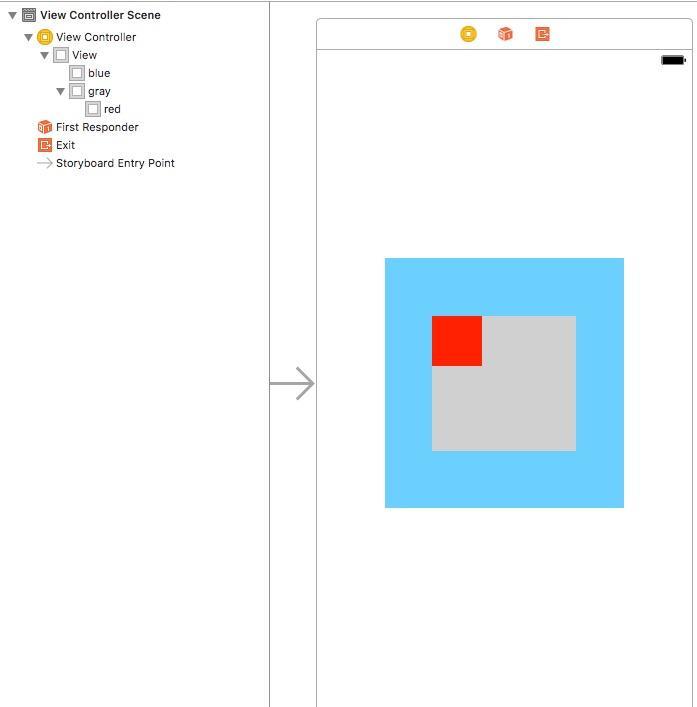iOS 坐标系转换(convertPoint)以及点在范围内的判断(pointInside)
1.坐标系转换convertPoint
对于复杂界面,适当的增加界面的层级有助于简化每层的逻辑结构,更利于解耦。但是会遇到不同层级之间的view进行范围判断的问题,由于view所在的层级不同,直接去比较坐标是没有意义的,只有把需要判断的view放置到同一个坐标系下,其坐标的判断才有可比性。
下面通过一个例子说明

view层级结构如上图,blueView和grayView是同一个层级,redView为grayView的子视图,如何判断redView和blueView的关系呢(在内部,在外部,还是相交)?
此时就需要进行坐标系转换
官方提供了4个方法(UIView的方法):
-
-(CGPoint)convertPoint:(CGPoint)point toView:(nullable UIView *)view;//点转换
-
-(CGPoint)convertPoint:(CGPoint)point fromView:(nullable UIView *)view;//点转换
-
-(CGRect)convertRect:(CGRect)rect toView:(nullable UIView *)view;//矩形转换
-
-(CGRect)convertRect:(CGRect)rect fromView:(nullable UIView *)view;//矩形转换
具体使用如下:
获取 redView 在 self.view 坐标系中的坐标(以下两种写法等效):
CGPoint redCenterInView = [self.grayView convertPoint:self.redView.center toView:self.view]; CGPoint redCenterInView = [self.view convertPoint:self.redView.center fromView:self.grayView];
使用注意:
1.使用 convertPoint:toView: 时,调用者应为covertPoint的父视图。即调用者应为point的父控件。toView即为需要转换到的视图坐标系,以此视图的左上角为(0,0)点。
2.使用 convertPoint:fromView: 时正好相反,调用者为需要转换到的视图坐标系。fromView为point所在的父控件。
3. toView 可以为nil。此时相当于toView传入 self.view.window
补充:有人问道为什么相对于self.view 和相对于self.view.window 不一样呢?
因为在 viewDidLoad 方法中,self.view.window为nil,测试的时候注意不要直接写在 viewDidLoad 方法中,写在 viewdidAppear 中。
--
2.点在范围内的判断
方案一: 转换为同一坐标系下后比较x,y值,判断范围。
方案二: 利用pointInside方法进行判断。
方案一不需介绍,下面说明下方案二的使用。
UIView有如下一个方法,用于判断点是否在内部
-
-(BOOL)pointInside:(CGPoint)point withEvent:(nullable UIEvent *)event; // default returns YES if point is in bounds
使用注意:
point必须为调用者的坐标系,即调用者的左上角为(0,0)的坐标系。
比如确定redView的中心点是否在blueView上: //转换为blueView坐标系点 CGPoint redCenterInBlueView = [self.grayView convertPoint:self.redView.center toView:self.blueView]; BOOL isInside = [self.blueView pointInside:redCenterInBlueView withEvent:nil]; NSLog(@"%d",isInside); 输出结果为1。即点在范围内。
理解了这两个方法,在做某些需求的时候就会更加得心应手。











![[HBLOG]公众号](https://www.liuhaihua.cn/img/qrcode_gzh.jpg)

